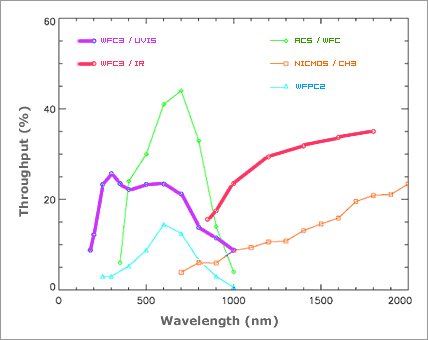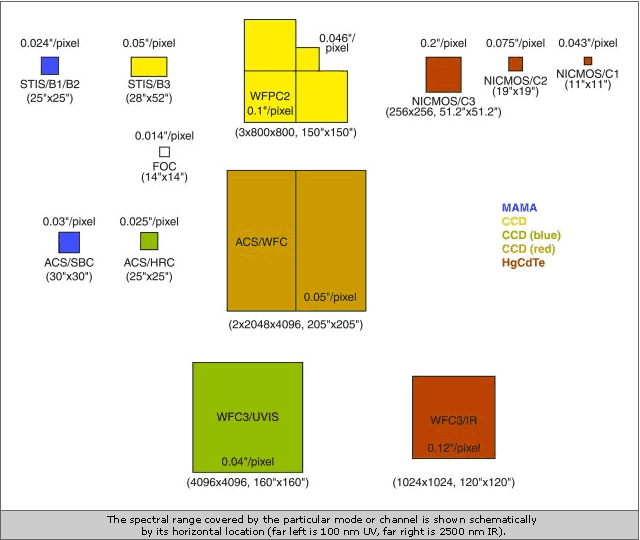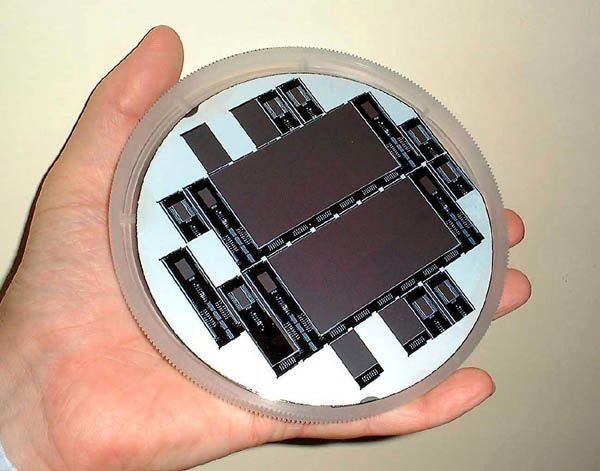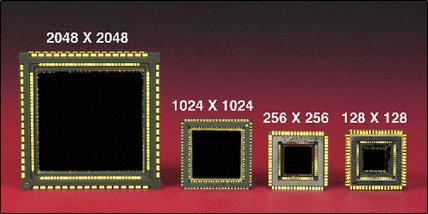Channel & Detector Capabilities
Shown below is the spectrum coverage of the WFC3's two channels in relation to the visible spectrum of the human eye. The wide wavelength coverage at high efficiency is made possible by using two different detector technologies for each channel.

Comparison of Sensitivity to Other Instruments
The expected total instrument throughput (sensitivity) as a function of wavelength is shown in the chart below. WFC3's throughput is compared to Hubble's other instruments. The optical purity of WFC3 will support diffraction-limited imaging (low distortion) over most of its range. This allows the instrument to exploit a well-defined and uniform point-spread-function over the entire field-of-view.

Channel Characteristics Summary
| UVIS | IR | Units | |
|---|---|---|---|
| Format | two 2048x4096 UV coating |
1024 x 1024 | pixels |
| Field Size | 160 x 160 | 123 x 139 | arcsec |
| Resolution | .04 | .13 | arcsec/pixel |
| Spectral Range | 200 to 1000 | 800 to 1700 | nm |
| Dark Current | <5.6x10^-5 | <0.05 | e-/pix/sec |
| Readout Noise | <3 | <17 | e-/pix/readout |
| Filters/Grism | 47/1 | 14/2 | --- |
The detectors represent the core hardware of the WFC3 instrument. It is in these devices that rapidly advancing technology plays the biggest role. A detector works like an electronic version of a human eye. Its photosensitive pixels convert optical (light) information into an electric charge. A greater charge corresponds to a brighter point of light for each pixel.

This illustration shows the relative fields-of-view and resolutions for all of Hubble's imaging instruments. The detectors are color coded according to the material they are made out of.
UVIS Channel - CCD Detector

Two rectangular CCD Detectors (2x4K) embedded in a silicon wafer.
» Making CCD's special feature
The WFC3 UV channel utilizes two 2x4K pixel CCD detectors from E2V Technologies. By coating the detectors with special anti-reflective coatings, they may be made extremely sensitive in spectral areas previously unavailable. The detectors are sensitive from a range of 200 to 1000 nanometers.
Advances in UVis technology allow extremely high quantum efficiencies, better than 50%, or one-half electron/photon per pixel. Together with the large format of the UVis array, high resolution imaging at a broader spectral range is now possible. With these highly efficient detectors, the entire instrumental efficiency is raised significantly above current capabilities.
The combination of high-efficiency detectors and anti-reflective coatings allows WFC3 to maintain the Near-UV sensitivity of ACS in high-resolution mode, while meeting or exceeding the response of ACS in wide-field mode.
IR Channel - IR Detector

IR Detectors shown in various sizes.
The IR channel uses a 1024 x 1024 pixel HgCdTe (Mercury - Cadmium - Tellurium) detector developed by Teledyne Technologies. Detectors with this cutoff wavelength were developed by Teledyne Technologies specifically for the WFC3 program. It is sensitive in the region of 800 - 1700 nanometers.
By placing the long wavelength cutoff at 1700 nm rather than at longer wavelengths, this IR detector can be operated at higher temperatures than typical IR detectors. By raising the operating temperature of the detector, cooling can be accomplished using simpler and cheaper thermoelectric coolers (TECs) rather than complex cryogens or mechanical coolers as are used in NICMOS.


